An all-inclusive experience, redefined…At Bawah Reserve in Indonesia’s pristine Anambas...
Begin your day at Bawah Reserve with your choice from our Juice Butler service: fresh...
If you’ve noticed the beautifully patterned fabrics in your villa, you’ve already...
Ready to make a splash?For guests who are both swimming-fit and up for a challenge,...
Welcome to the thermal contrast therapy facility at Aura Sanctuary at Bawah Reserve,...
Planning your dream private island holiday in Indonesia? Here at Bawah Reserve, we...
3 ways to repost or use our Instagram Reels
We love that you want to share a little...
2024 wellness trends were exciting for sure, but it keeps getting better! The top...
A new subtle yet powerful trend - that of being “demure” and “mindful” - has been...
When we think of bees, honeybees often come to mind. However, at Bawah Reserve, a...
In the heart of Southeast Asia lies a hidden gem that promises a retreat into nature,...
It’s safe to say that if you ask someone to name a tropical island destination, they will...
As we step into 2024, the world of well-being is teeming with transformative trends that...
2 years ago for Earth Day 2022, we created 10 sincere pledges for investing in the planet...
Starting to plan your dream wedding? Some couples have a clear idea of their perfect...
We are often asked about the best time of year to schedule a trip to Bawah Reserve.Which...
Our faraway paradise is well worth the journey and there are many ways to get to Bawah,...
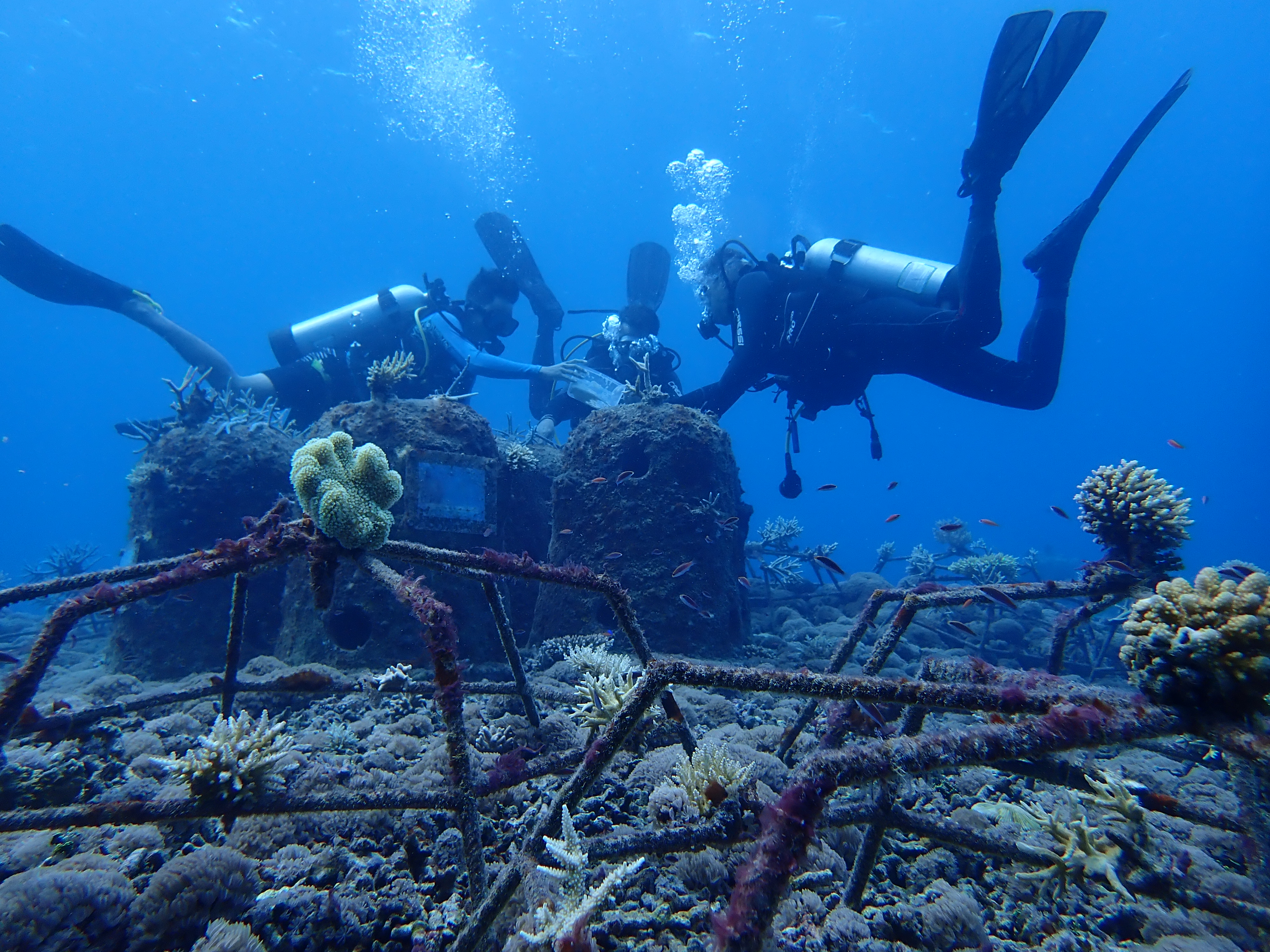
Due to past unsustainable fishing practices such as dynamite, cyanide fishing, and the dumping of large ghost nets, some areas of reefs around Bawah have become degraded.
Although these practices came to an end in 2014 with the establishment of the Bawah Reserve marine conservation site, for a reef to recover naturally it can take decades. One of the main goals of the Bawah dive team is to facilitate and enhance this natural reef restoration, aiming to increase the speed of the recovery process.
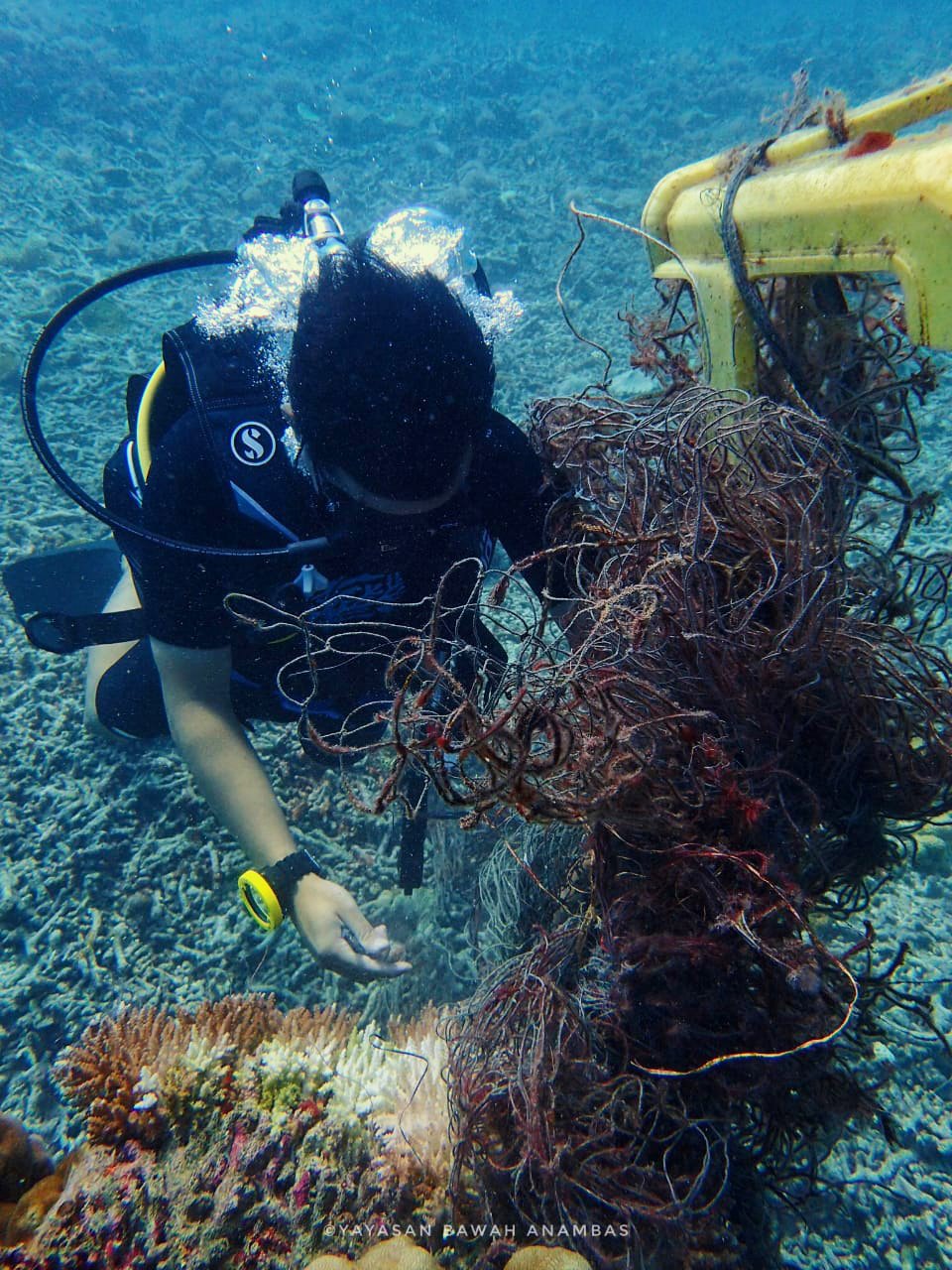
Coral reefs all over the world are currently under threat. It is estimated that currently 25% of the world’s reefs are beyond repair and another 66% are under serious threat [1] and by 2050, all
coral reefs will be under threat [2] . Although they cover less than 1% of the world’s surface, they are
home to 25% of all marine fish species and are vital spawning and nursery grounds for many more [3].
It is estimated that they contribute $375 billion per year around the world in goods and services [4],
and many countries depend on their existence for tourism and flood protection from storm surges
and strong waves, so their importance cannot be overstated.
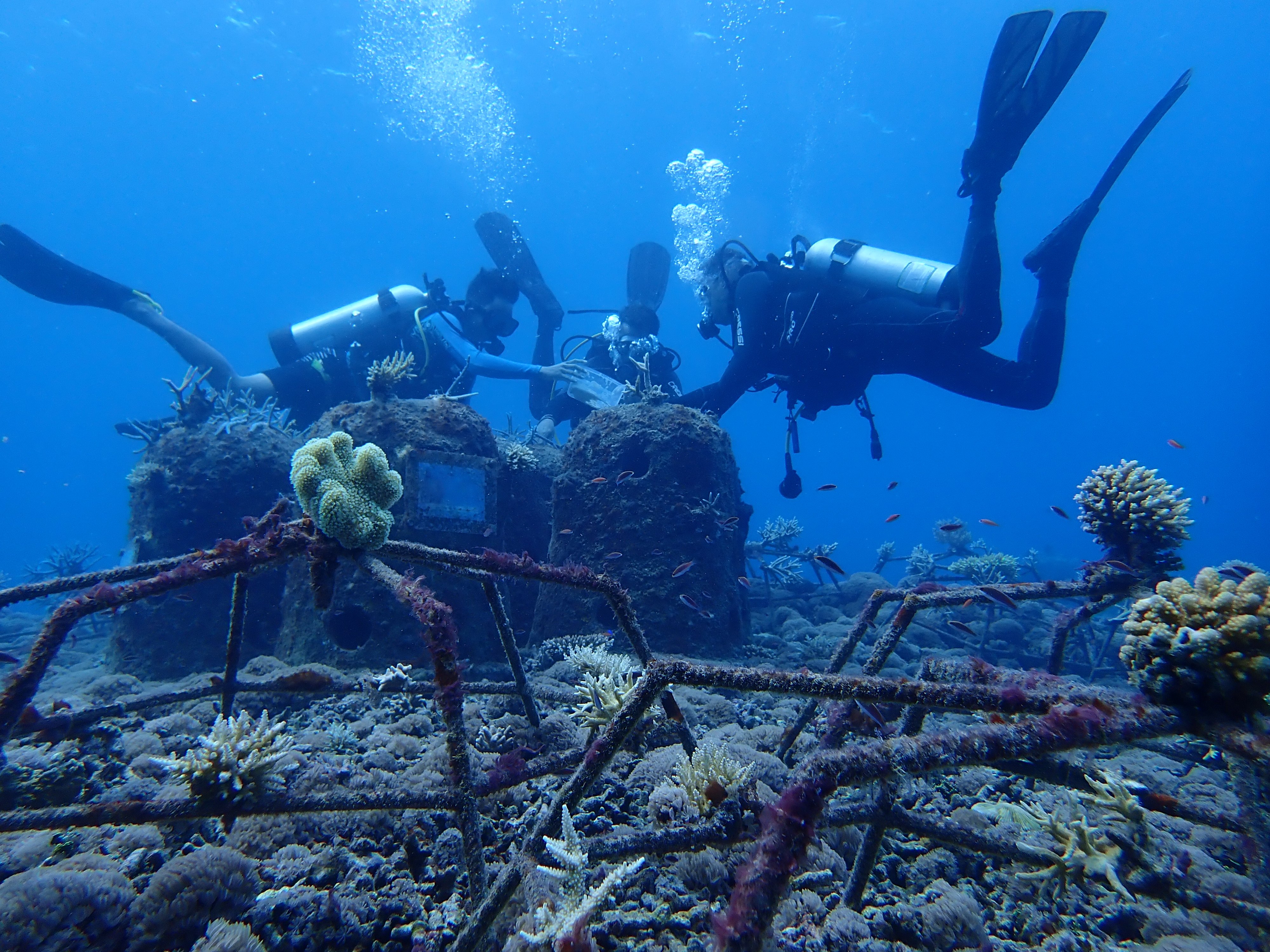
One way that many conservation organisations across the world are trying to mitigate this threat to
coral reefs is by the construction of artificial reefs in areas where the coral cover has reduced significantly.
Artificial reefs can come in all shapes and sizes, but the thing they all have in common is that they
must be made of a stable, strong, non-reactive substrate. By providing this stable structure the
artificial reef affords protection from predators for local fish and invertebrate populations and also
provides somewhere for coral recruits to settle and grow.
Artificial reefs are not a new idea. It has been recorded that Japanese fishermen were placing wood
structures in and around their fishing grounds to improve the local stock up to 400 years ago, however in recent years, with the threat to coral reefs becoming more apparent, the methods and materials used to construct artificial reefs have evolved significantly.
1) Modern artificial reefs are commonly built with metal or concrete and they can be any size and shape that the builders' imagination can allow. Some designs have become more popular than others, such as the Concrete Hexadomes or metal coral spiders that we have installed in the reefs around Bawah, as seen below.
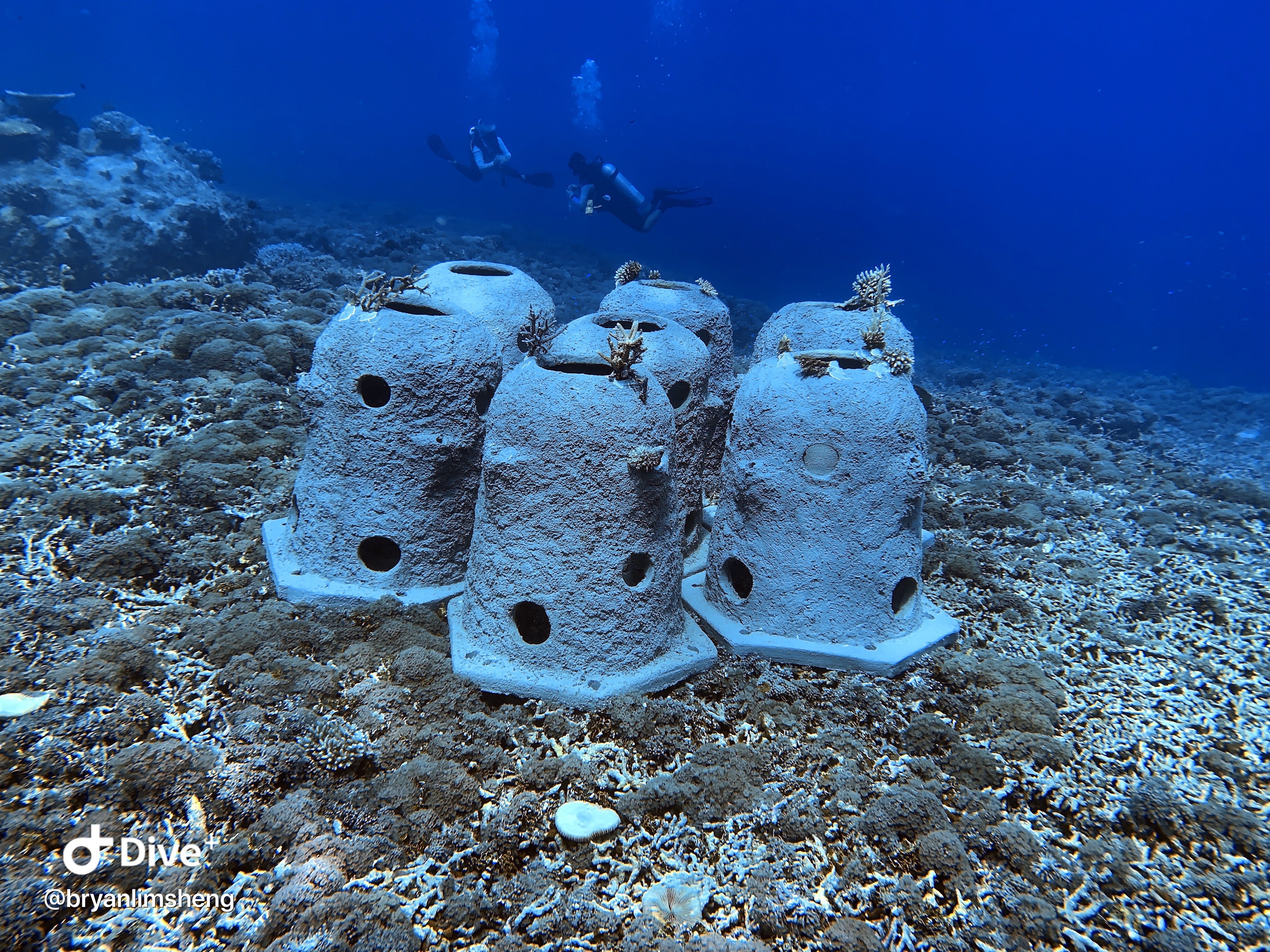
2) Once the structures are positioned it is common for coral fragments to be attached using cable ties, marine epoxy, or other, similar methods. On Bawah, the coral fragments that are attached consist of nearby unsecured fragments that would otherwise have little chance of surviving or fragments that have been cultivated on one of our nursery structures.
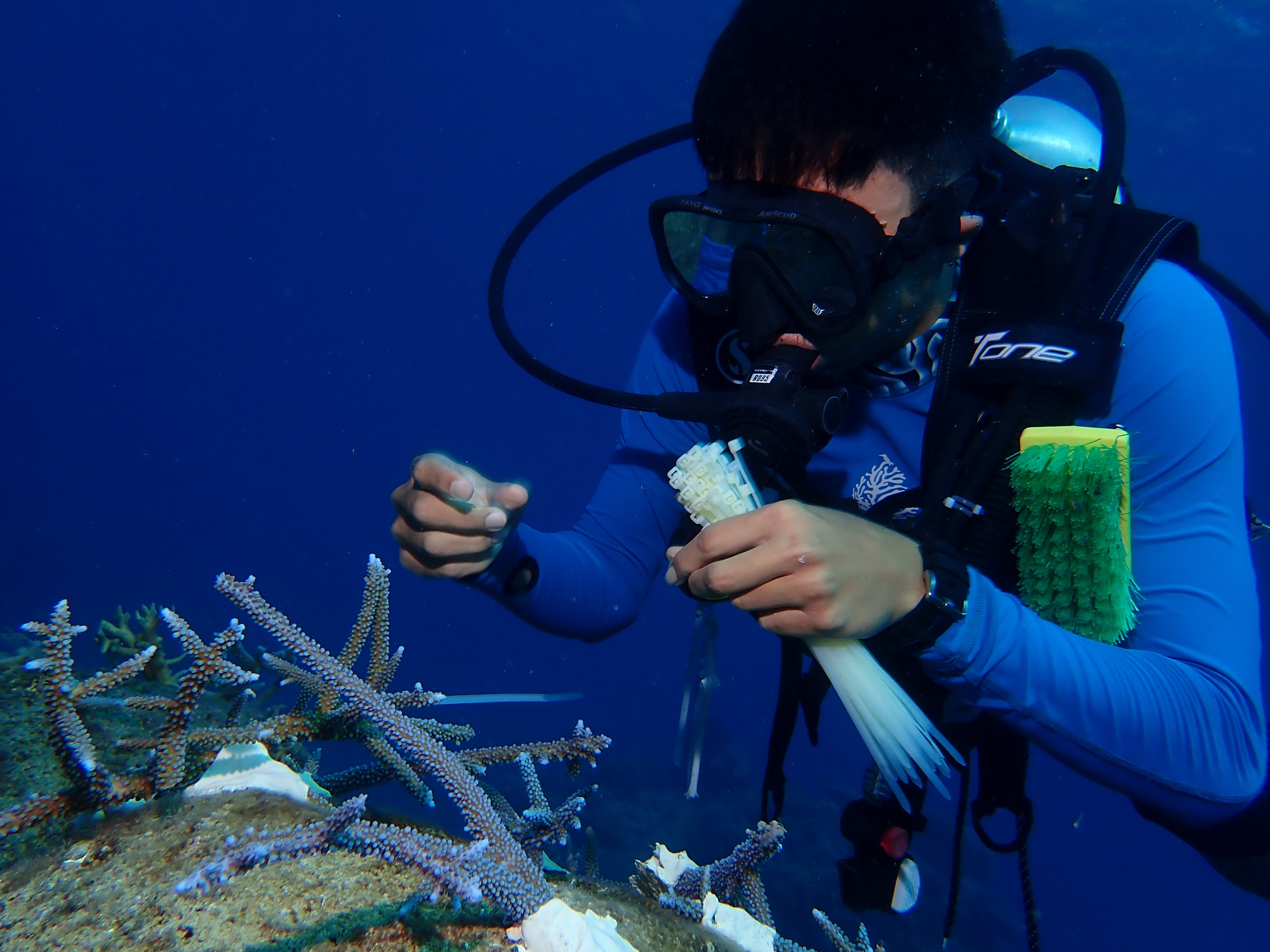
3) The shape and design of the structure also serve as protection for small and juvenile fish, as well as invertebrates. This keeps the reef healthy as these creatures tend to consume the algae that naturally grow on the structures.
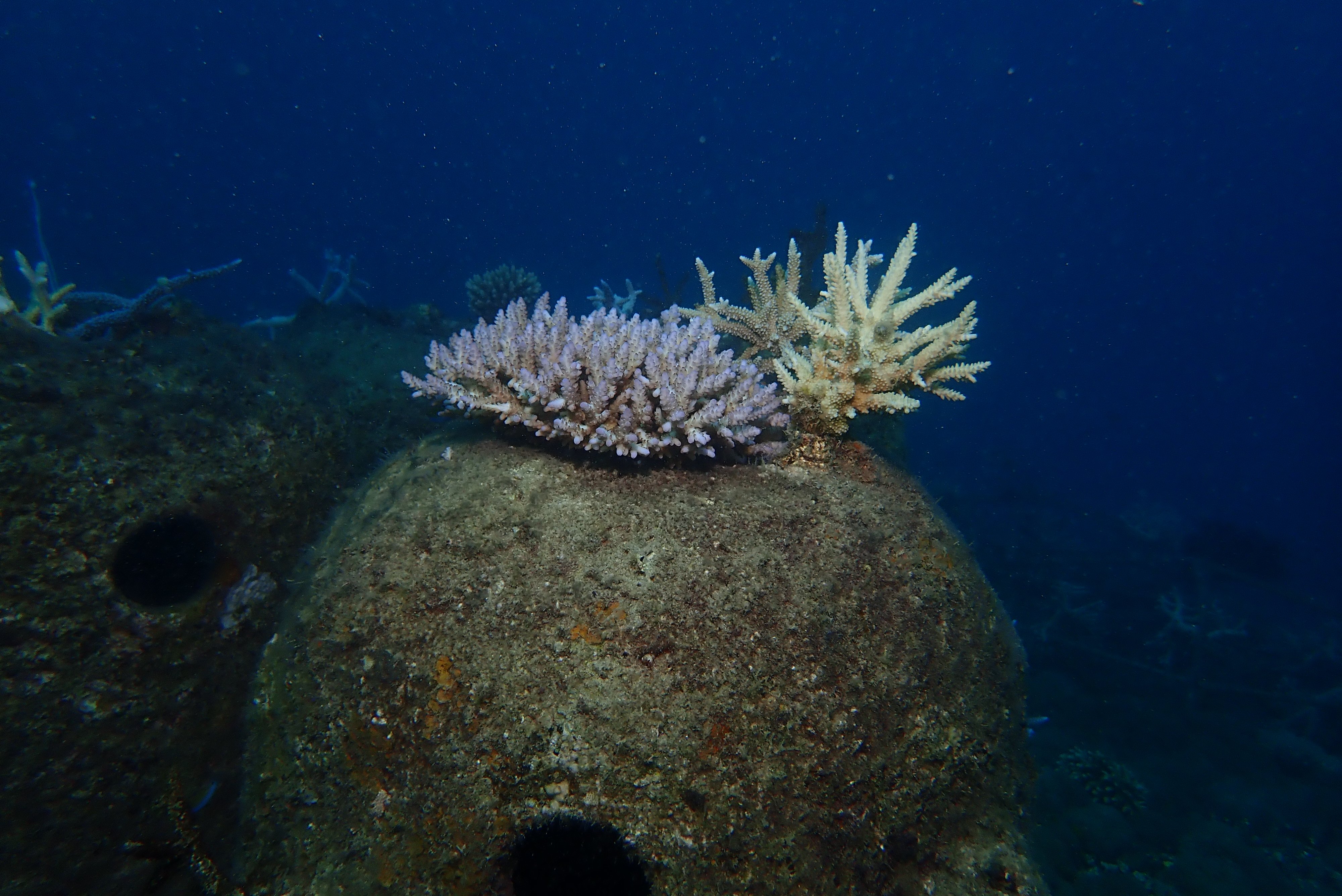
4) Over time, the corals will grow over their attachment medium and then eventually over the structure itself.
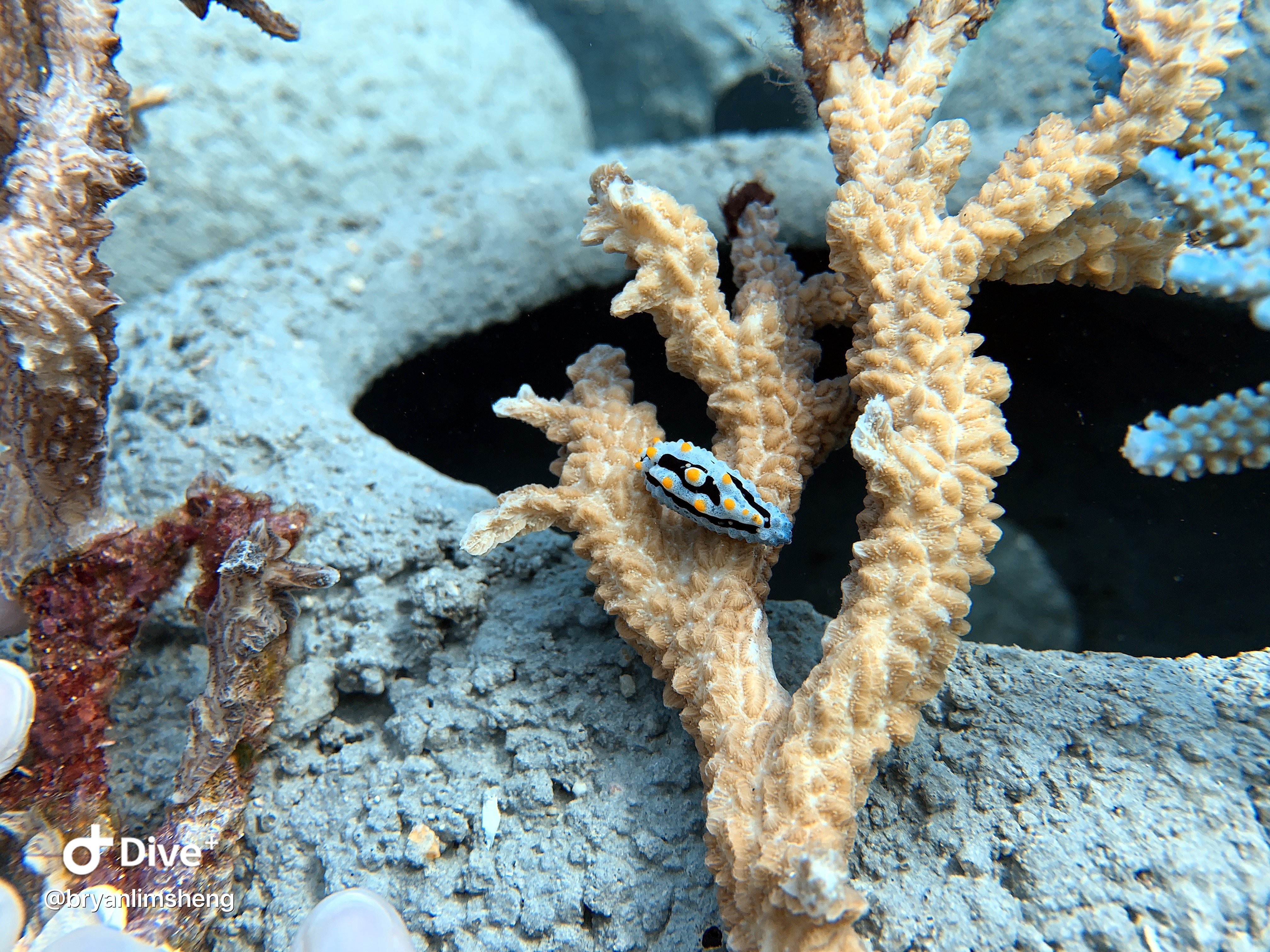
5) Corals are exceptionally slow-growing animals, which is why a stable, solid substrate is so important when trying to cultivate corals on artificial reefs. Even the fast-growing species only grow to 10-15cm per year, therefore reef restoration is a slow process, rather more akin to replanting a forest than tending a garden.
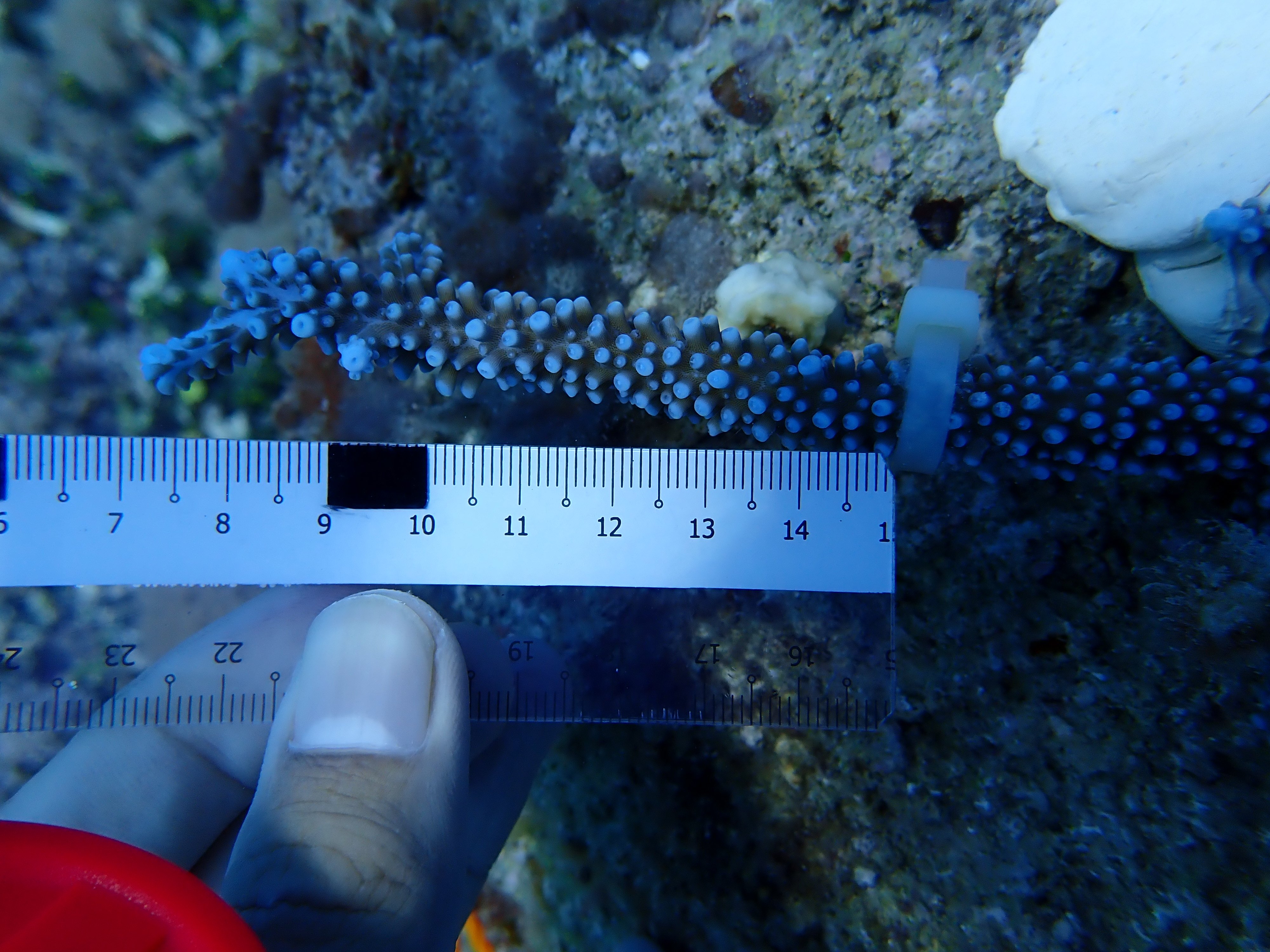
Unfortunately, despite the amazing work going on globally to conserve and restore these vital habitats, coral reefs are still under a myriad of threats; to learn more about these threats and what can be done to stop them, please visit Coral Reef Alliance or download the publication “Reefs at Risk in South East Asia” (for free) from HERE, which provide thorough details on the pressures coral reefs are facing, both in Indonesia and globally.
Guests at Bawah can also get involved in the coral reef restoration effort by joining the diving team on marine conservation. During the dive, guests will help transplant and preserve coral for future generations as well as assist with other marine conservation efforts such as underwater clean-ups to remove ghost fishing nets and equipment left on the reef. Learn More.
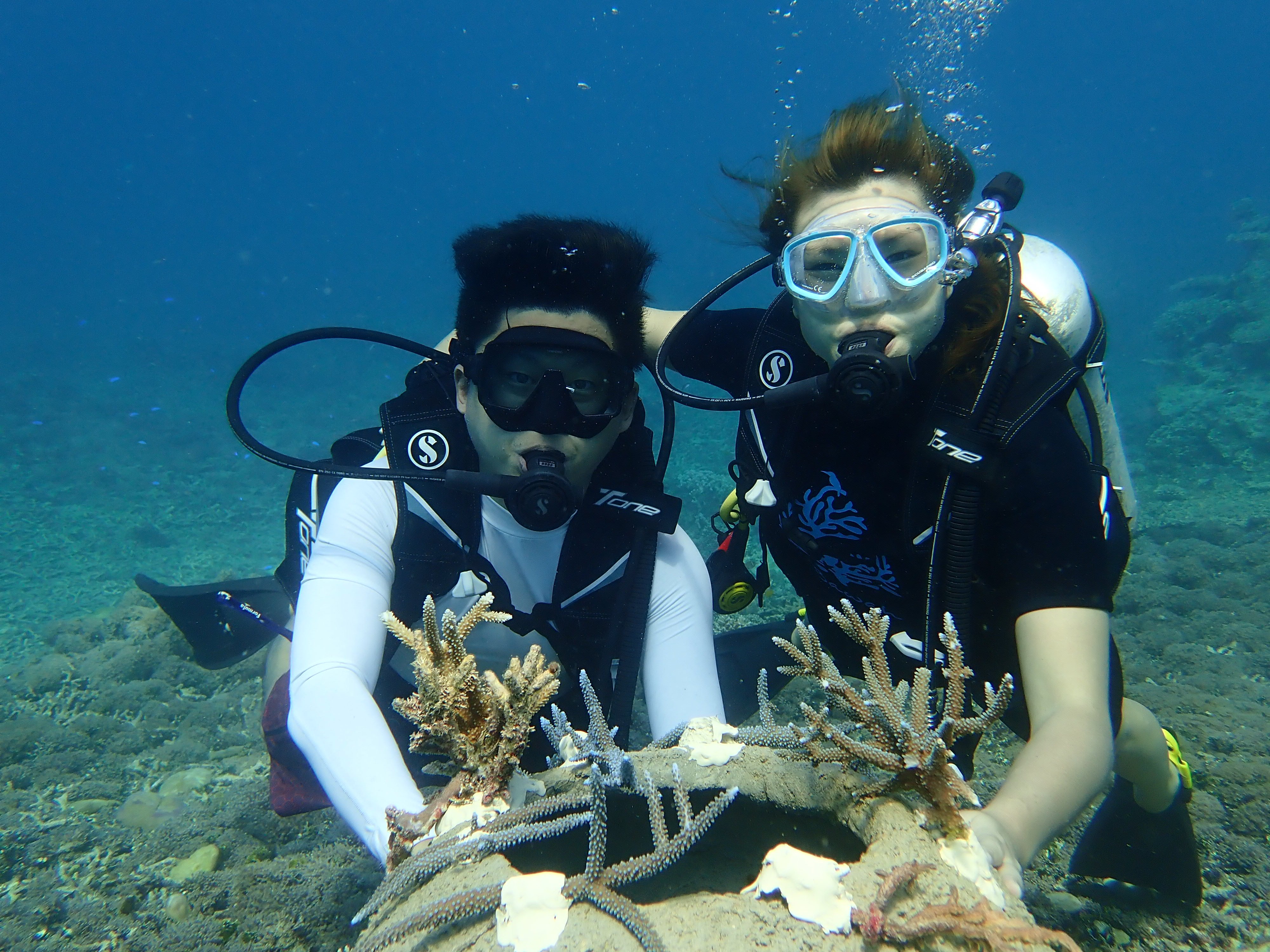
References:
1. WWF Website
2. Coral Reef Alliance
3. Burke, L., D. Bryant, J. McManus, and M. Spalding. 2008. Reefs at Risk
4. Costanza, R., and C. Folke. 1997. Valuing ecosystem services with efficiency, fairness, and sustainability as goals.
An all-inclusive experience, redefined…At Bawah Reserve in Indonesia’s pristine Anambas...
Begin your day at Bawah Reserve with your choice from our Juice Butler service: fresh...
If you’ve noticed the beautifully patterned fabrics in your villa, you’ve already...
Ready to make a splash?For guests who are both swimming-fit and up for a challenge,...
Welcome to the thermal contrast therapy facility at Aura Sanctuary at Bawah Reserve,...
Planning your dream private island holiday in Indonesia? Here at Bawah Reserve, we...
3 ways to repost or use our Instagram Reels
We love that you want to share a little...
2024 wellness trends were exciting for sure, but it keeps getting better! The top...
A new subtle yet powerful trend - that of being “demure” and “mindful” - has been...
When we think of bees, honeybees often come to mind. However, at Bawah Reserve, a...
In the heart of Southeast Asia lies a hidden gem that promises a retreat into nature,...
It’s safe to say that if you ask someone to name a tropical island destination, they will...
As we step into 2024, the world of well-being is teeming with transformative trends that...
2 years ago for Earth Day 2022, we created 10 sincere pledges for investing in the planet...
Starting to plan your dream wedding? Some couples have a clear idea of their perfect...
We are often asked about the best time of year to schedule a trip to Bawah Reserve.Which...
Our faraway paradise is well worth the journey and there are many ways to get to Bawah,...
© Bawah Reserve 2024. Anambas. Riau Islands. Indonesia
leave a comment